Treating nail fungus with folk remedies is a lengthy process that can take 1 to 4 months. However, it is possible that after a while the disease will relapse. This is due to the high level of infectivity of the microorganisms that cause this pathology and the spread of their spores in the living environment of the infected person.
What is nail fungus
Toenail fungus is an infectious disease with a chronic course that results from infection of this part of the limb with pathogens (fungi). In medical terminology, this pathology is called onychomycosis.
It is a common disease that is difficult to treat with all types of therapy.On average, every 10th resident suffers from nail fungus. The disease can become complex forms that completely affect the entire surface of the nail plate, causing it to peel and deform.
Types of Nail Fungus
Treatment of nail fungus using folk remedies is a long process, a positive result can be achieved after 1-3 months. from the beginning of therapy. Also of great importance is the variety of mycosis, the development of which has led to the defeat of all or part of the nail plate.
The following table shows the types of nail fungus and a description of the pathological process:
| Type of onychomycosis | Disease characteristics |
| Normotrophic | The color of the nail plate changes. Long streaks and irregular spots may appear. At the same time, the normal gloss of the nail, the transparency of the plate and the normal thickness are maintained. It is not a serious type of disease that responds well to treatment with traditional medicine. |
| Hypertrophy | The nail changes color and loses its shine and transparency. The gradual deformation of the nail plate results in the destruction of the edges. It is possible to detach part of the nail from the bed. The degree of deformation of the plate depends directly on the fertilization of the tissues by pathogenic microorganisms. |
| Oncolytic | This is an atrophic type of disease when the deformation phase of the nail plate is completed. The nail tissue is destroyed, which is eventually ejected from the root of the bed. |
The classification of onychomycosis by species diversity is used by dermatologists.
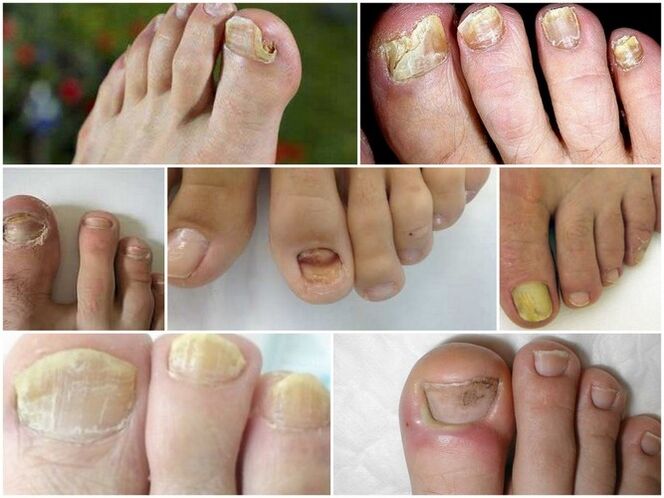
The disease is also divided according to the signs of the clinical picture, namely:
- distal - damage to the nail plate occurs only from the side of the free wind;
- lateral - nail destruction develops on the sides;
- proximal - mycosis destroys the tissues of the posterior spine;
- total - the fungus touched the nail completely, from the roots to the beginning.
The type and form of the disease is determined by a specialist when examining the patient. Based on the results of the examination and the diagnosis, a treatment regimen is chosen. This applies to both pharmacological therapies and folk remedies.
Stages and degrees of nail fungus
Treatment of nail fungus with long-term folk remedies is a chronic disease. Onicomycosis develops over several months and sometimes many years. This depends on how strong the patient's immune system is as well as the strain of the infectious pathogen.
Each stage of the disease is characterized by a gradual deterioration of the health of the affected tissues, namely:
- Stage 1 - the color of the nail plate gradually changes along the edges, streaks and spots of white, gray or yellow may form, other painful signs of the disease are completely absent (the person feels a sharp and unpleasant yeast odor from the toesorigin);
- Stage 2 - onychomycosis progresses, covering the entire area of the nail plate, the structure of which begins to change from the edges of the edges to the base of the bed (the color of the diseased tissues is completely yellow or gray, there are no signs of transparency);
- Stage 3 - the last stage of nail fungus development, characterized by complete necrosis of the affected tissues, which are deformed and rejected by the body (appearance of local inflammation caused by the detachment of the nail plate) of the bed base is possible).
The last stage of the disease is the most severe form of onychomycosis. After the nail is rejected, it re-forms, but in this case, healthy tissues are already formed. If a person does not take measures to treat a dermatological disease and get rid of the pathogenic microorganisms, the new nail will also become infected with mycoses and die to the ground.
Symptoms of nail fungus
Nail fungus, the treatment of which with folk remedies requires the regular use of homemade decoctions, tinctures and ointments, is a disease with pronounced symptoms.

Onchomycosis of this part of the body can be recognized by the following symptoms:
- redness of epithelial tissues around the perimeter of the nail plate;
- white spots or streaks appear on the nail side as well as on the front side that do not disappear during sheet metal processing or water treatment;
- the nail plate gradually changes color, its transparency decreases (the pathological process develops from the edges to the middle and root of the tissues);
- fungal microorganisms penetrate deep into the nail plate, destroying its structure, leading to deformation;
- the affected nail is yellow wrinkled;
- mechanical action on the affected tissues, they separate from the nail bed (this process may be accompanied by painful symptoms and ichor secretion at the root of the nail, where it connects to the epithelial and soft tissues of the toe. ).
Each of the above symptoms is accompanied by the persistence of a pungent and unpleasant odor that is similar to yeast but more pronounced. This sign of the disease appears even before the external symptoms begin to develop, indicating a gradual destruction of the nail plate tissues.
Causes of nail fungus
Nail fungus, the treatment of which is based on the principle of systemic use of home remedies, cannot develop on its own without the influence of many factors.
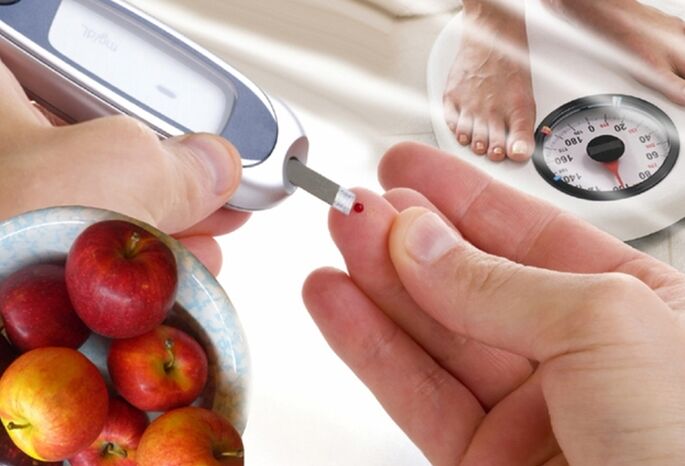
Onychomycosis infection is possible in the following cases:
- as a result of visiting public showers, baths, steam baths, swimming pools, saunas, if a person has not used custom rubber slippers, has come into contact with a surface on which viable spores of fungal microorganisms are present;
- several people wear shoes together when one of them has mycotic lesions on the nail plates;
- poor hygiene, occasional foot washing;
- The presence of concomitant diseases such as diabetes, varicose veins, and foot deformity increases the risk of nail fungus as local immunity is reduced or nutrients are created to increase the population of fungal microorganisms;
- wears poor quality coated shoes that do not allow air to pass through and do not absorb water, which eventually leads to the toes being constantly wet;
- Contact of the open part of the foot or nail with the floor surface of the apartment if the person with onychomycosis lives under the same living conditions.
A person's immune status plays an important role in the development of the disease. People with strong immunity can avoid infection and further damage to the nail plate. A warm and humid environment is an ideal condition for fungal microorganisms, so this information should be taken into account when visiting beaches and other crowded places.
Diagnosing nail fungus
Nail fungus, the treatment of which with folk remedies begins only after a detailed examination by a dermatologist, is an infectious disease that requires careful diagnosis. This is necessary to determine the strain of fungal microorganisms and then to select a treatment regimen that will be effective in a given case.
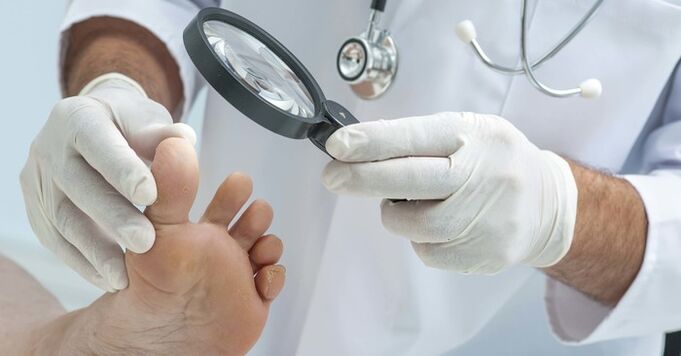
To diagnose onychomycosis, the patient should perform the following test steps:
- Preliminary examination by a dermatologist, who examines the appearance of the affected plate, assesses the condition of the tissues, the degree of their deformation;
- a smear is performed from the surface of the epithelium located around the perimeter of the nail bed (biochemical analysis is performed on the strain of fungal microorganisms as well as the possible presence of secondary bacterial microflora);
- Under the conditions of the laboratory's manipulation room, the specialist selects a portion of the affected tissues in order to study the fungal microorganisms in more detail and to rule out the simultaneous presence of multiple mycoses;
- In addition to the toes, an examination of the skin surface of the foot is also performed to make sure that the fungal disease is localized and that there are no signs of it spreading to other parts of the lower limb.
Based on the results of the external examination and the laboratory results, the treating physician diagnoses the patient - onychomycosis, or denies the presence of pathology.
Diagnosis takes an average of 1-3 days. In a public hospital, the services of a biochemical laboratory are free, but the conditions for testing biological material can last up to 7-10 days.
When to see a doctor
A dermatologist should be consulted as soon as signs of nail fungus are observed.The delay is fraught with worsening of symptoms and damage to large areas of the nail plate.
In addition, a person carrying signs of onychomycosis is a carrier of a fungal infection and, without being noticed, spreads spores of pathogenic microorganisms in the everyday conditions of his residence. In this case, onychomycotic infection of healthy family members is not ruled out.
Prevention of nail fungus
Contamination of the nails with a fungal infection can be avoided, but this requires simple prevention rules on a daily basis that protect the lower extremities from being fertilized by pathogenic microorganisms.
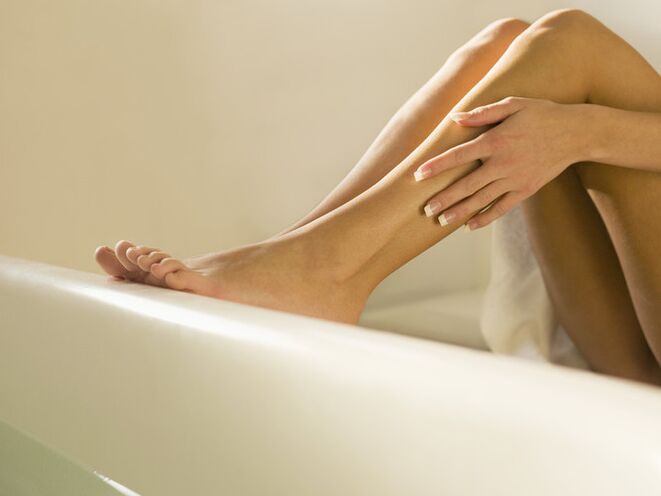
The following actions are recommended:
- Do not visit public baths, swimming pools, saunas, showers, or wear unique rubber-soled shoes on your feet;
- Wear only high-quality genuine leather shoes;
- follow the rules of personal hygiene, wash your feet daily with warm water and soap, wash your socks;
- insists on treating family members who have signs of nail fungus but have been allowed to run the disease and do not seek medical attention;
- During summer holidays, walk only on the beach near open water bodies, avoiding contact between the epidermis of the feet and toes with sand, river mud or earth;
- wear only your own shoes;
- make sure there are no mold areas in the apartment or private house (moisture on the walls, fungus that has infected old wood floors, floor tiles, blackening of the wallpaper in the corners).
To prevent fungal infections of the nails, it is recommended to pay special attention to strengthening the immune system.
To do this, you need to take a contrast shower every day, give up bad habits, harden the body, eat rationally, consume only biologically useful products (cereals, chicken, rabbit, turkey, veal, fresh fruits, vegetables, herbs, cottage cheese, milk, cheese, ocean fish).
Methods of treating nail fungus
Onychomycosis is also treated with traditional medicines, traditional medicine prescriptions, and surgery. Each of these methods is effective at a certain stage in the development of the disease.
Medications
Fungal infections are treated with drugs that have a spectrum of antifungal activity.
Antifungal medications should only be prescribed by a dermatologist. Only one skilled in the art can determine which drug is effective in a particular clinical case. In addition, laboratory test data from collected samples of deformed or altered nails are taken into account when designing the treatment regimen.
Traditional methods
There are traditional medical prescriptions that allow you to get rid of a fungal infection of your nails without the use of medications. To do this, use the following compresses, homemade ointments, tinctures and other methods:
Kombucha compression
To make this folk remedy, you need to buy a kombucha or grow it yourself at home. A piece of this ingredient is cut with a knife and then placed on the surface of the infected nail. The procedure is performed at night before bedtime. The Kombucha is attached to the finger with adhesive plaster. The timing of therapy is not limited by time.
Onion Tincture
Take 1 medium onion, cut with a knife and pour 1 tbsp. granulated sugar.
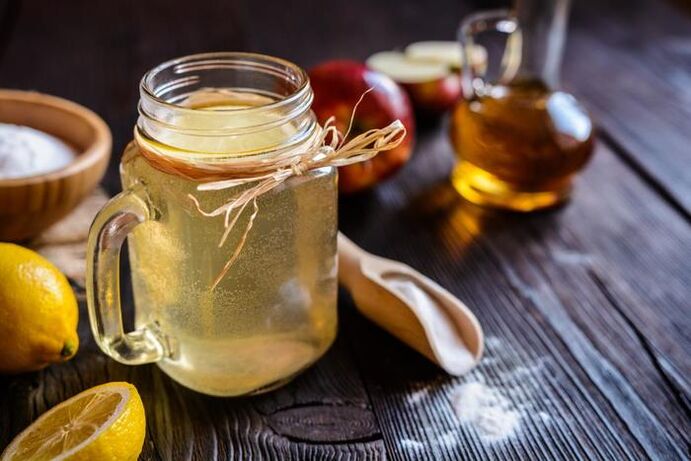
The prospective medicine will be sent to the refrigerator for 24 hours. During this period, the chopped vegetables are able to release a sufficient amount of juice, which is infused and then used as a medicine. Wipe the sick nail with onion malt 3-4 times a day for 3 months or until complete recovery.
Antiseptic solution
This product is made at home, mixed in equal proportions 1 tsp. boiled water, ethyl alcohol and garlic paste. All components are mixed until a homogeneous mass is formed. The resulting solution is used for antiseptic treatment of nail plate at least twice a day. The treatment lasts for at least 3-4 months.
Salt ointment against fungi
An effective antifungal agent that is easy to make at home. To do this, ½ take a teaspoon. table salt, add 1 tbsp. l. honey collected from herbs and then mix all the ingredients. The result is a honey-based ointment that contains a high concentration of mineral salt.
The product is applied to the nail plate once a day. It is best to perform the procedure at night. Precautions should be taken during treatment, not allowing home medications to get on the skin around the nail bed, and you should also protect the mucous membranes of the eyes.
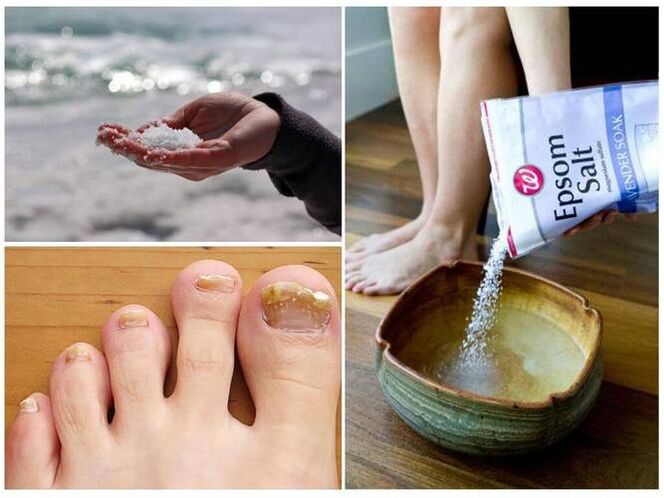
Homemade ointment is used until the patient's nails are detached by further shaping the healthy plate. Alternative therapies are indeed effective, but the only downside to their use is the timing of the therapy.
They must be used for at least 3 months. The initial form of fungal infection of the nail plates on the legs can be eliminated within 2 months. In this case, treatment should be continuous. Even skipping a procedure can worsen tissue health.
Other methods
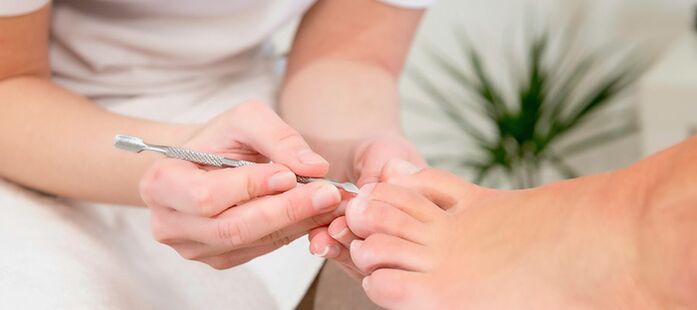
An alternative treatment for fungal infections of the lower extremities is surgery. The method consists of the doctor removing the deformed nail plate.
Surgery is usually performed as follows:
- The patient comes to the operating room on his own and then lies down on the couch or sits in a chair.
- The nurse injects a local anesthetic into her finger whose nails are affected by onychomycosis.
- After starting the anesthetic (after 5-10 minutes), the surgeon rips the affected nail plate with tweezers.
- Disinfect the treated area with sutures and sterile dressings.
After the operation is completed, the patient is taken to the ward of the surgical department, where they are treated with additional antifungal drugs. The average duration of complete healing of the wound site is 7-10 days. Within 1 month. a new nail plate grows which, provided the treatment process is properly organized, has no signs of fungus.
Possible complications
In the absence of measures to cure nail plates from fungal infections, the following complications caused bypathogenic microorganisms may occur:
- complete deformation of the nail plate with further detachment from the bottom of the bed;
- the spread of the fungus in healthy skin tissues located on the surface of the foot, between the toes, the transition of the disease to the nails of the upper limbs, the inguinal folds;
- Onychomycosis infection in other family members who have not previously suffered from a fungal disease (children are the most vulnerable because their immune systems are weaker than those of adults);
- Loss of the nail and completion of the formation of the new plate, as the integrity of the structure is initially damaged due to the multitude of infectious microorganisms.
It is possible to treat nail fungus with folk remedies, but this requires maximum effort, after spending at least 3 months. time.
The main danger of onychomycosis is that the fungal microorganisms that cause nail plate damage are highly contagious and adapt quickly to new environmental conditions and the effects of active drug components.
Therefore, treatment of the disease should be started as early as possible to prevent its transition to a complicated or chronic form of the course.






























